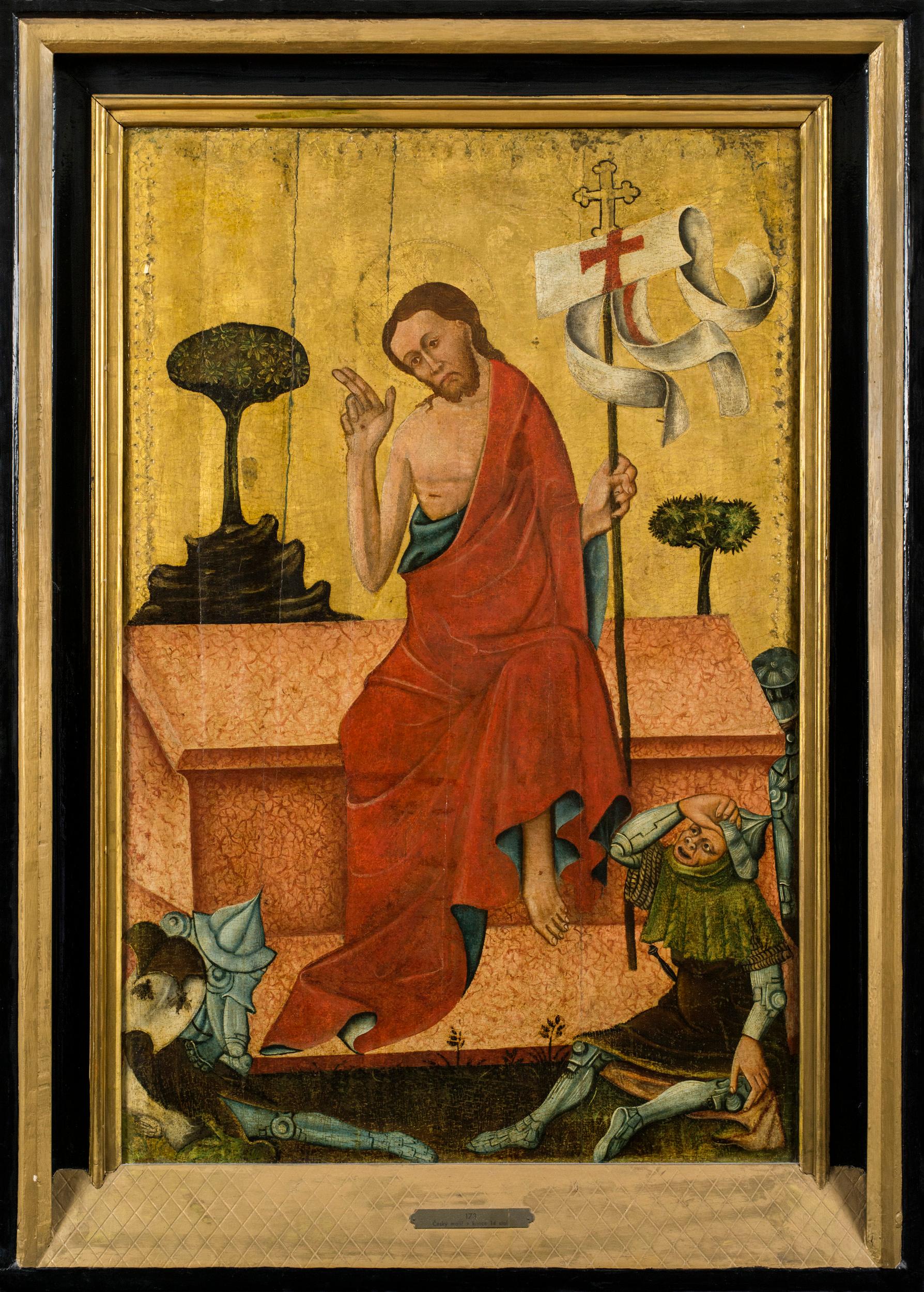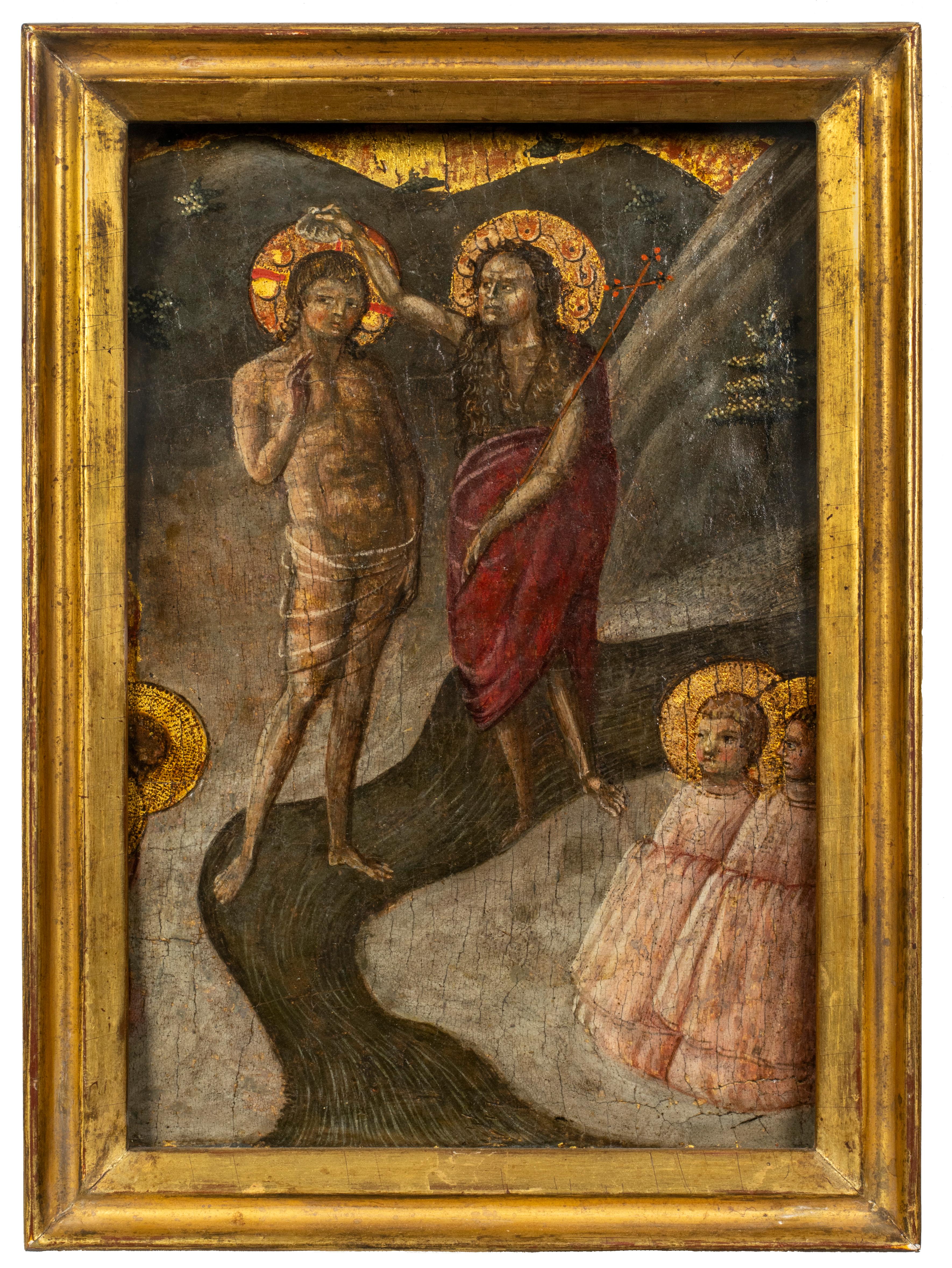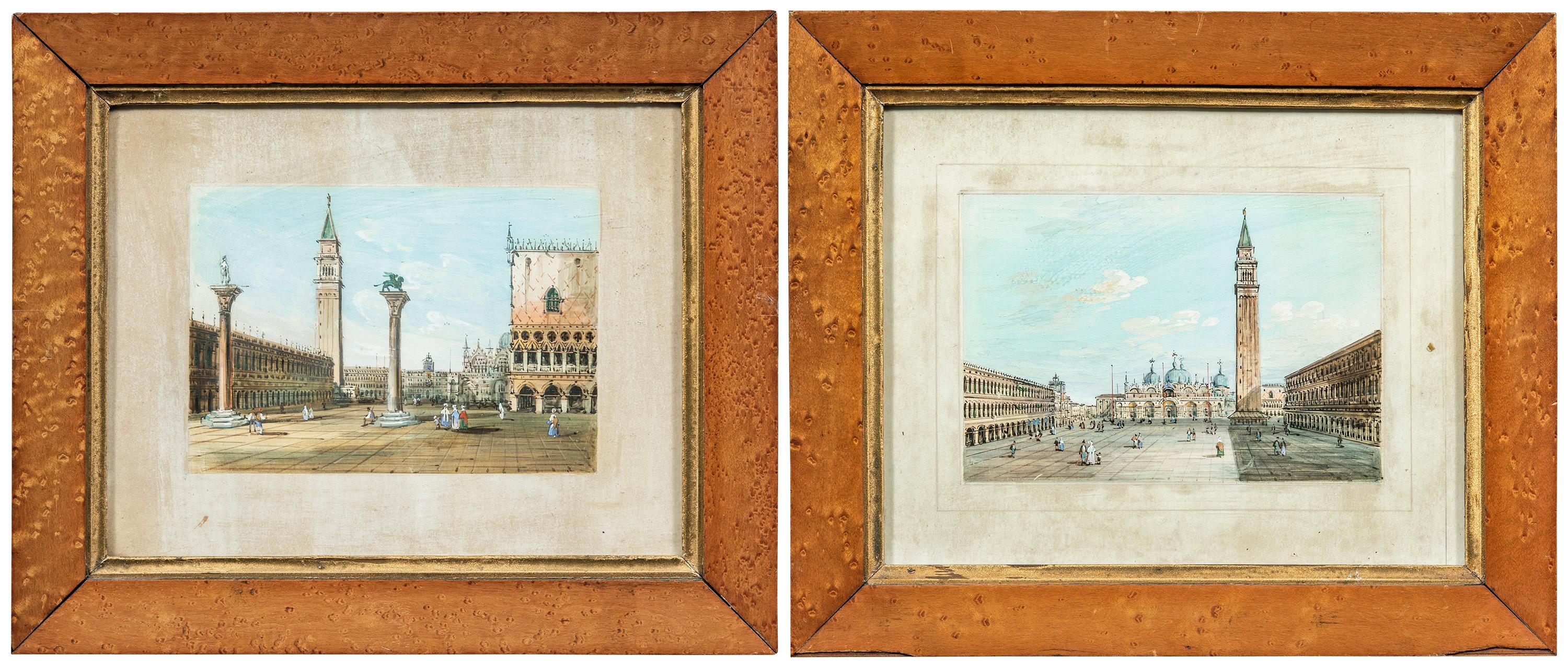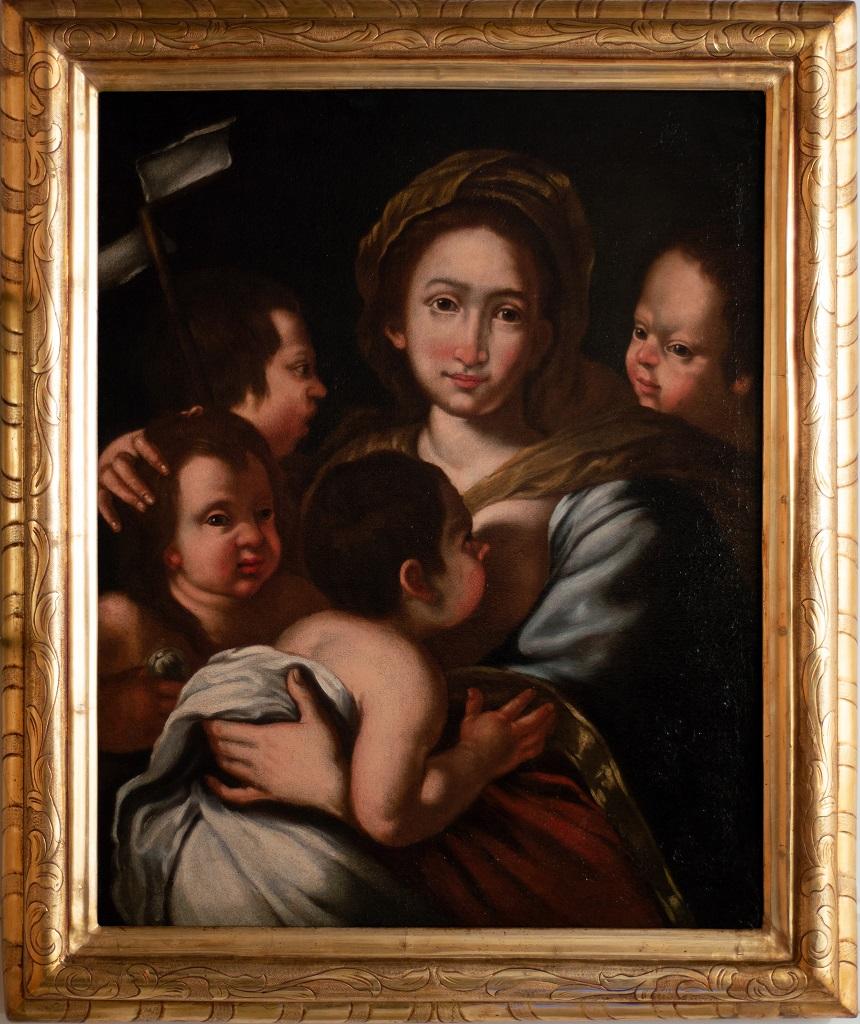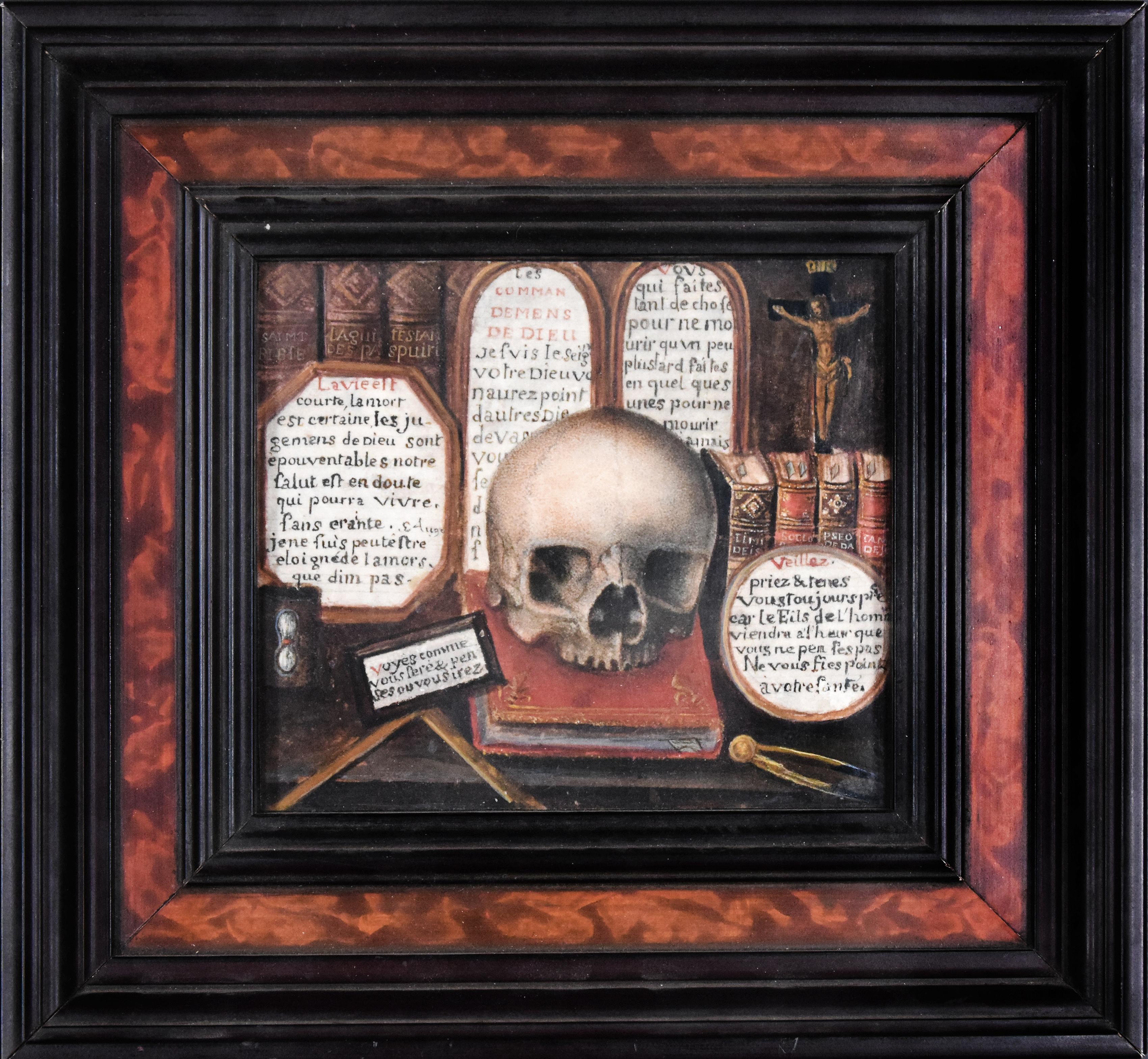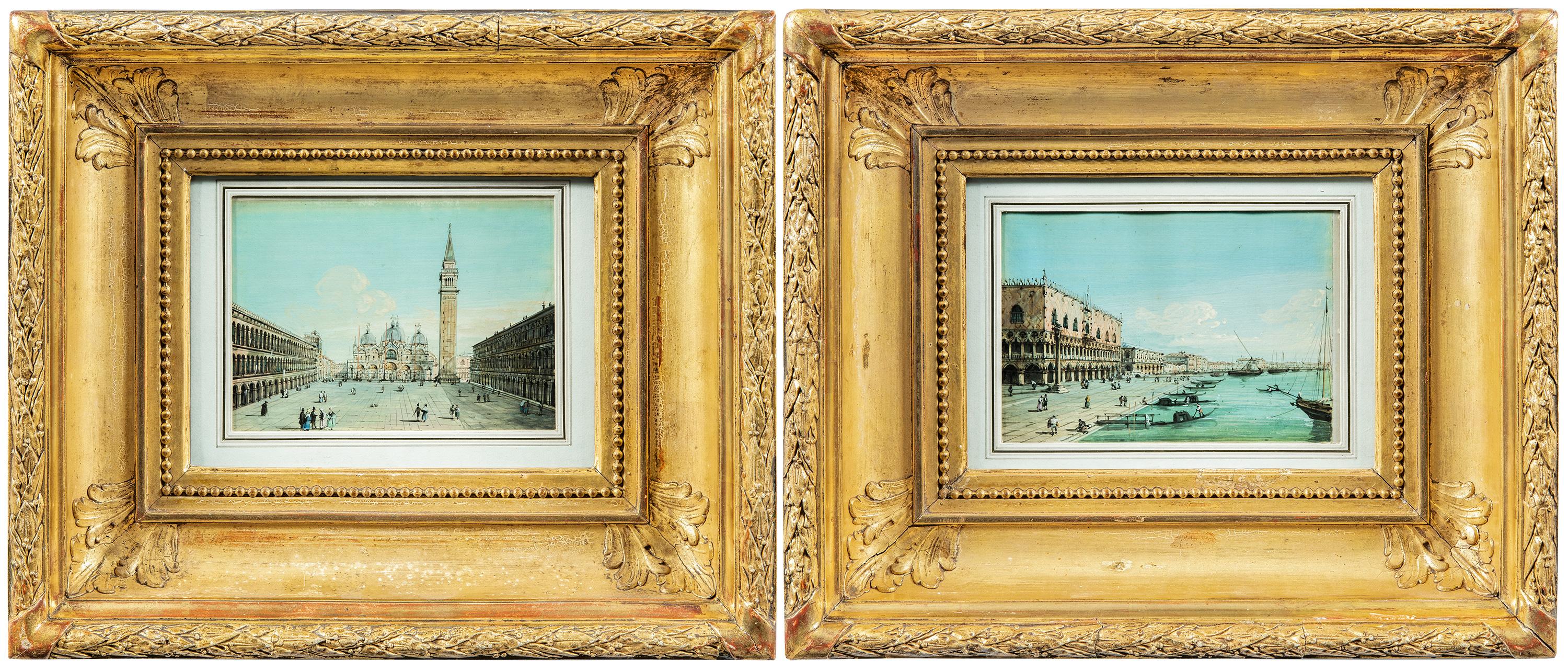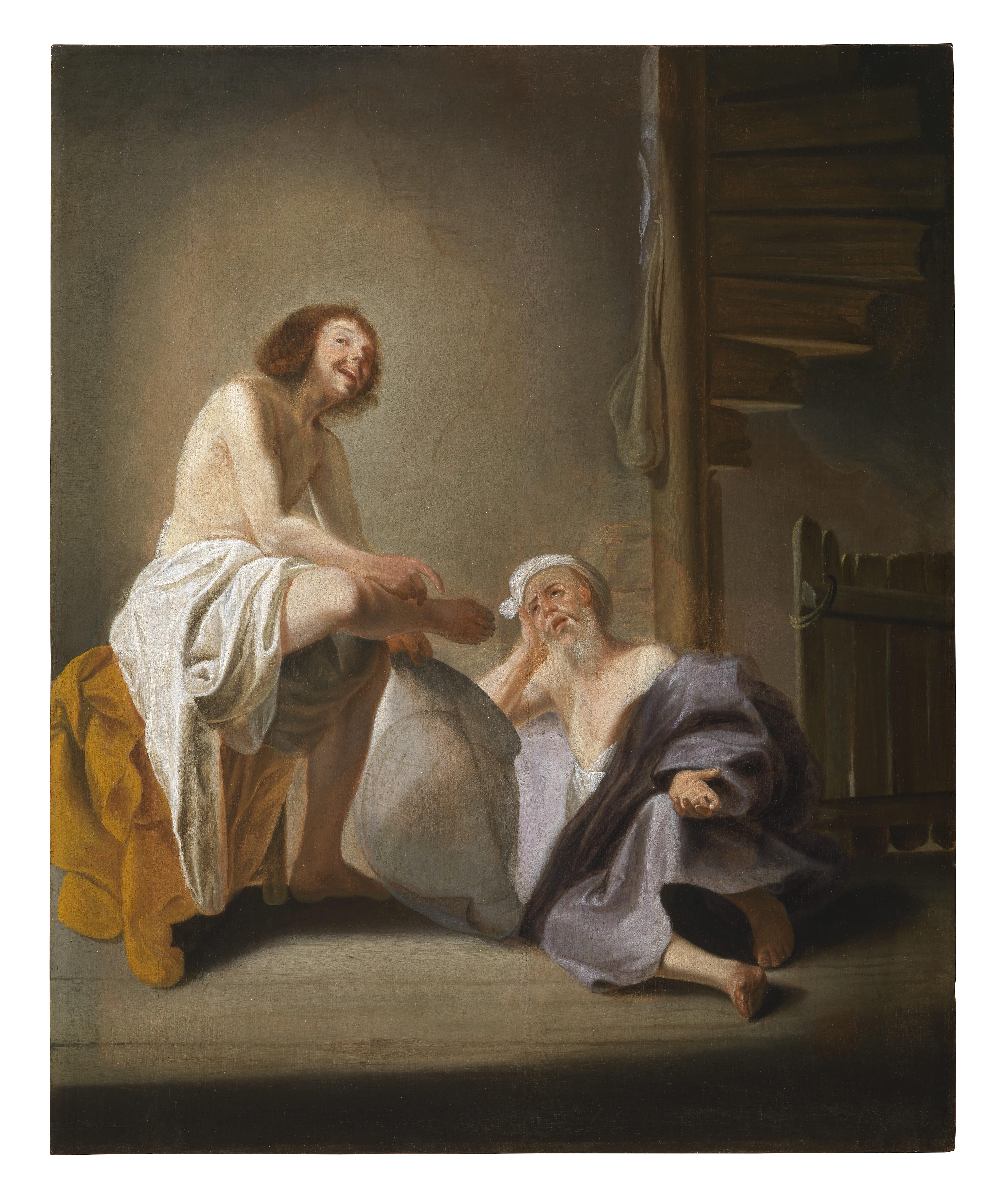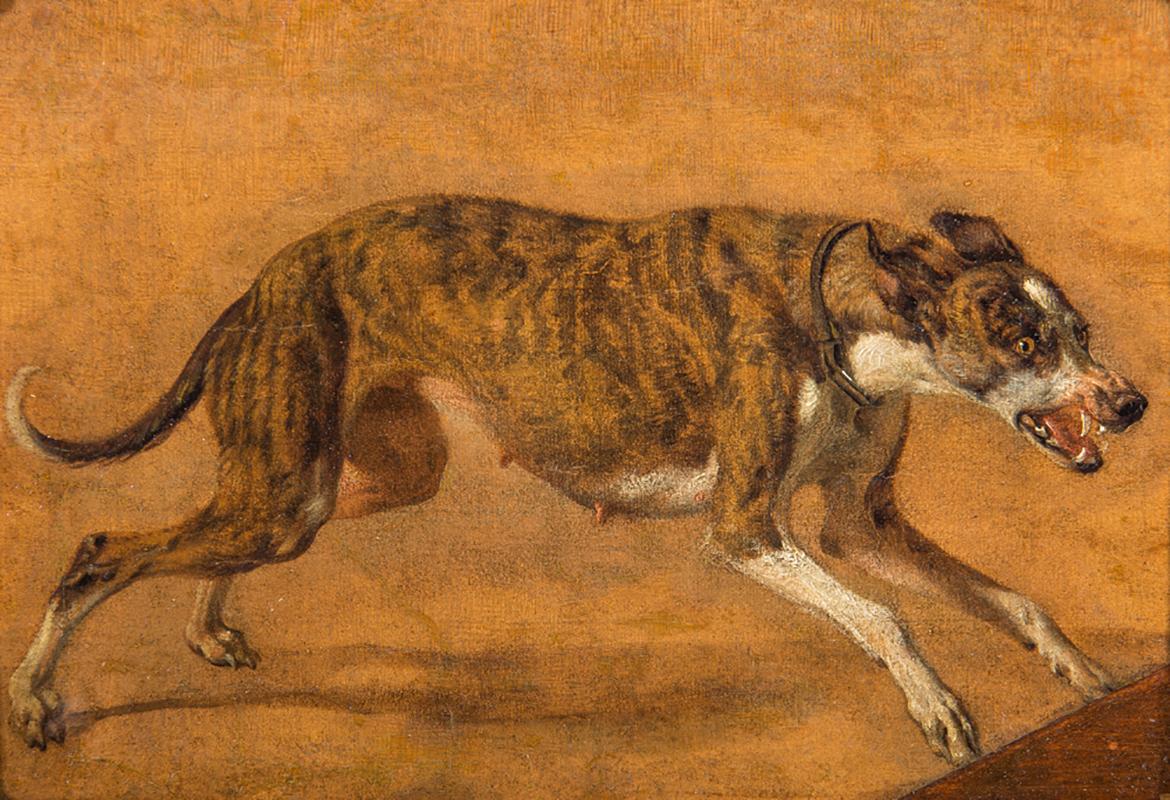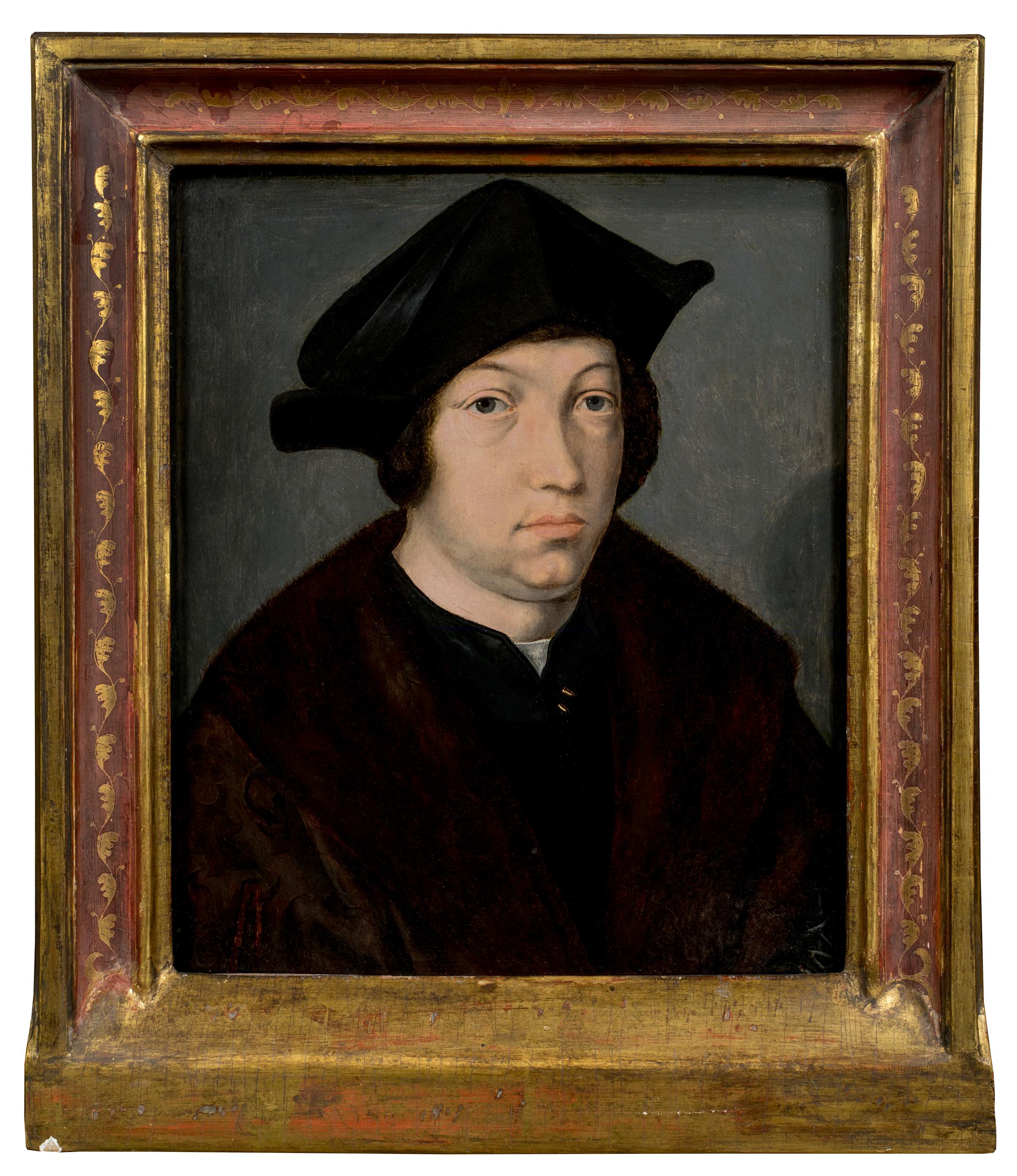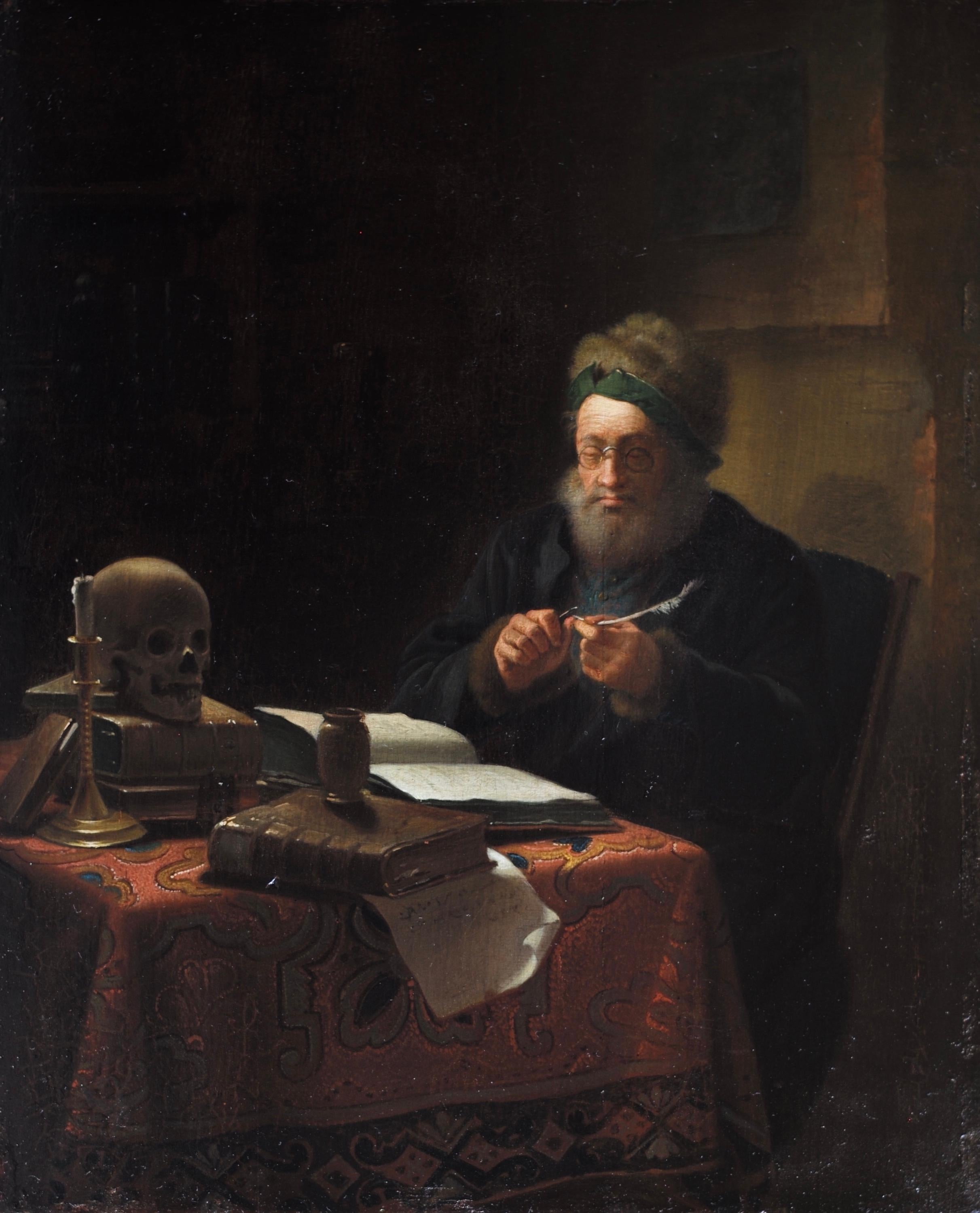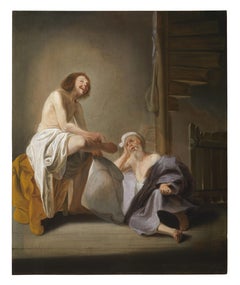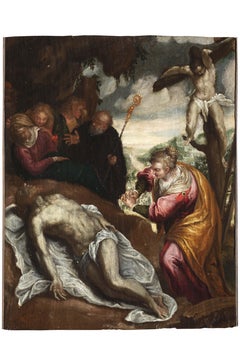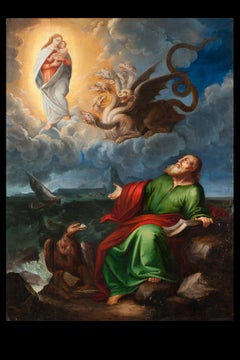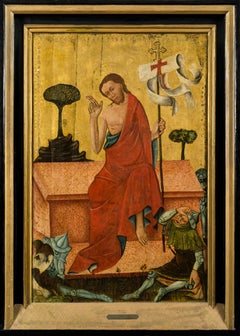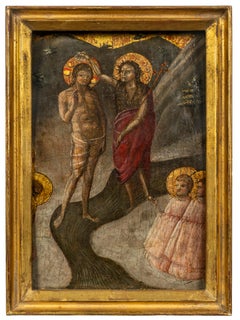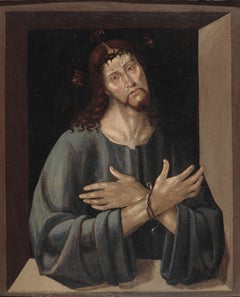
15th Century By Maestro della Pala Sforzesca Vir Dolorum Tempera on Panel
View Similar Items
Want more images or videos?
Request additional images or videos from the seller
1 of 9
Maestro della Pala Sforzesca15th Century By Maestro della Pala Sforzesca Vir Dolorum Tempera on Panel15th century
15th century
About the Item
- Creator:Maestro della Pala Sforzesca (Italian)
- Creation Year:15th century
- Dimensions:Height: 25.6 in (65 cm)Width: 21.07 in (53.5 cm)
- More Editions & Sizes:80 x 72 cm with framePrice: $59,353
- Medium:
- Movement & Style:
- Period:
- Condition:
- Gallery Location:Milano, IT
- Reference Number:1stDibs: LU1701213662922
About the Seller
5.0
Vetted Seller
These experienced sellers undergo a comprehensive evaluation by our team of in-house experts.
Established in 1964
1stDibs seller since 2021
More From This SellerView All
- 17th Century By Paulus Bor Heraclitus and Democritus Oil on PanelLocated in Milano, Lombardia"Cassetta" frame in ebonized wood. Publications: - Expertise by Prof. Gianni Papi; - G. Papi, Un misto di grano e di pula. Scritti su Caravaggio e l’ambiente caravaggesco, Roma 2...Category
17th Century Old Masters Figurative Paintings
MaterialsOil, Wood Panel
- 16th Century by Venetian Maestro Deposition of Christ Oil on PanelLocated in Milano, LombardiaFormerly Canesso Collection, Paris. Publications: Bozzetti, modelletti, sketches: dalla collezione di Giorgio Baratti (From the Giorgio Baratti Collection) curated by Anna Orlando, ...Category
16th Century Old Masters Figurative Paintings
MaterialsOil, Wood Panel
- 16th Century by Neapolitan Maestro Vision of Saint John in Patmos Oil on PanelLocated in Milano, LombardiaWithout frame. Expertise by Prof. Antonio Vannugli A brightly lit gash opens up in the middle of the sky; within it appears the figure of the Virgin with the Child and beside her a...Category
16th Century Old Masters Figurative Paintings
MaterialsOil, Panel
- 17th Century by Giulio Benso The Expulsion of the Merchants From the TempleLocated in Milano, LombardiaGiulio Benso (Genoa, 1592 - 1668) Nineteenth-century shaped and gilded wooden frame The marvellous canvas, a masterpiece by Giulio Benso, a 17th-century Genoese painter, depicts the...Category
Early 17th Century Old Masters Figurative Paintings
MaterialsCanvas, Oil
- 18th Century by Giuseppe Bonito The Painter's Studio or Allegory of PaintingLocated in Milano, LombardiaGiuseppe Bonito (Castellammare di Stabia, 1707 - Naples 1789) The Painter's Studio or Allegory of Painting Oil on canvas, cm.40,5 x 64 - with frame cm....Category
Mid-18th Century Old Masters Figurative Paintings
MaterialsCanvas, Oil
- 18th Century by Pietro Bardellino Mary Magdalene Painting Oil on CanvasBy Pietro BardellinoLocated in Milano, LombardiaPietro Bardellino (Naples, 1731 – Naples, 1806) Mary Magdalene Oil on canvas, cm. 75 x 60 – with frame cm. 97 x 82 Antique shaped and carved wooden frame Publications: unpublished T...Category
Mid-18th Century Old Masters Portrait Paintings
MaterialsCanvas, Oil
You May Also Like
- The Resurrection of ChristLocated in New York, NYProvenance: with “Mr. Scheer,” Vienna, by July 1918; where acquired by: Jindřich Waldes, Prague, 1918–1941; thence by descent to: Private Collection, New York Literature: Rudolf Kuchynka, “České obrazy tabulové ve Waldesově obrazárně,” Památky archeologické, vol. 31 (1919), pp. 62-64, fig. 5. Jaroslav Pešina, “K datování deskových obrazů ve Waldesově obrazárně,” Ročenka Kruhu pro Pěstování Dějin Umění: za rok (1934), pp. 131-137. Jaroslav Pešina, Pozdně gotické deskové malířství v Čechách, Prague, 1940, pp. 150-151, 220. Patrik Šimon, Jindřich Waldes: sběratel umění, Prague, 2001, pp. 166, 168, footnote 190. Ivo Hlobil, “Tři gotické obrazy ze sbírky Jindřicha Waldese,” Umění, vol. 52, no. 4 (2004), p. 369. Executed sometime in the 1380s or 1390s by a close associate of the Master of the Třeboň Altarpiece, this impressive panel is a rare work created at the royal court in Prague and a significant re-discovery for the corpus of early Bohemian painting. It has emerged from an American collection, descendants of the celebrated Czech industrialist and collector Jindřich Waldes, who died in Havana fleeing Nazi-occupied Europe. The distinctive visual tradition of the Bohemian school first began to take shape in the middle of the fourteenth century after Charles IV—King of Bohemia and later Holy Roman Emperor—established Prague as a major artistic center. The influx of foreign artists and the importation of significant works of art from across Europe had a profound influence on the development of a local pictorial style. Early Italian paintings, especially those by Sienese painters and Tommaso da Modena (who worked at Charles IV’s court), had a considerable impact on the first generation of Bohemian painters. Although this influence is still felt in the brilliant gold ground and the delicate tooling of the present work, the author of this painting appears to be responding more to the paintings of his predecessors in Prague than to foreign influences. This Resurrection of Christ employs a compositional format that was popular throughout the late medieval period but was particularly pervasive in Bohemian painting. Christ is shown sitting atop a pink marble sarcophagus, stepping down onto the ground with one bare foot. He blesses the viewer with his right hand, while in his left he holds a triumphal cross with a fluttering banner, symbolizing his victory over death. Several Roman soldiers doze at the base of the tomb, except for one grotesque figure, who, beginning to wake, shields his eyes from the light and looks on with a face of bewilderment as Christ emerges from his tomb. Christ is wrapped in a striking red robe with a blue interior lining, the colors of which vary subtly in the changing light. He stands out prominently against the gold backdrop, which is interrupted only by the abstractly rendered landscape and trees on either side of him. The soldiers’ armor is rendered in exacting detail, the cool gray of the metal contrasting with the earth tones of the outer garments. The sleeping soldier set within a jumble of armor with neither face nor hands exposed, is covered with what appears to be a shield emblazoned with two flies on a white field, somewhat resembling a cartouche (Fig. 1). This may be a heraldic device of the altarpiece’s patron or it may signify evil, referencing either the Roman soldiers or death, over both of which Christ triumphs. This painting formed part of the collection assembled by the Czech industrialist and founder of the Waldes Koh-i-noor Company, Jindřich Waldes, in the early twentieth century. As a collector he is best remembered for establishing the Waldes Museum in Prague to house his collection of buttons (totaling nearly 70,000 items), as well as for being the primary patron of the modernist painter František Kupka. Waldes was also an avid collector of older art, and he approached his collecting activity with the goal of creating an encyclopedic collection of Czech art from the medieval period through to the then-present day. At the conclusion of two decades of collecting, his inventory counted 2331 paintings and drawings, 4764 prints, and 162 sculptures. This collection, which constituted the Waldesova Obrazárna (Waldes Picture Gallery), was first displayed in Waldes’ home in Prague at 44 Americká Street and later at his newly built Villa Marie at 12 Koperníkova Street. This Resurrection of Christ retains its frame from the Waldes Picture Gallery, including its original plaque “173 / Česky malíř z konce 14 stol.” (“Czech painter from the end of the 14th century”) and Waldes’ collection label on the reverse. The Resurrection of Christ was one of the most significant late medieval panel...Category
15th Century and Earlier Old Masters Paintings
MaterialsTempera, Panel
- Circa 1400, Spanish school of 'The Prophet Daniel', tempera on panel with gildinLocated in Petworth, West SussexSpanish school, circa 1400 The prophet Daniel Tempera on panel with gilding 35.1/4 x 10.5/8 in. (89.5 x 28 cm.) Condition: The painting has been recently stabilised and cleaned up. ...Category
15th Century and Earlier Old Masters Figurative Paintings
MaterialsTempera, Wood Panel
- Baptism of ChristLocated in New York, NYProvenance: Achillito Chiesa, Milan Luigi Albrighi, Florence, by 1 July 1955 with Marcello and Carlo Sestieri, Rome, 1969 Private Collection, Connecticut Exhibited: Mount Holyoke College Art Museum, South Hadley, Massachusetts (on loan, 2012) Literature: Carlo Volpe, “Alcune restituzioni al Maestro dei Santi Quirico e Giulitta,” in Quaderni di Emblema 2: Miscellanea di Bonsanti, Fahy, Francisci, Gardner, Mortari, Sestieri, Volpe, Zeri, Bergamo, 1973, pp. 19-20, fig. 18, as by the Master of Saints Quiricus and Julitta (now identified as Borghese di Piero). This fine predella panel depicting the Baptism...Category
15th Century and Earlier Old Masters Figurative Paintings
MaterialsTempera, Wood Panel
- Russian Icon 16th century The Battle of the Novogorodians with the SuzdaliansBy Russian SchoolLocated in London, GBThe Battle of the Novogorodians with the Suzdalians 16th century Size 50.5 x 47.5 x 3 cm. The icon is located in the Russian Federation. There is an expert opinion from leading R...Category
16th Century Old Masters Paintings
MaterialsWood, Egg Tempera, Wood Panel
- Carlo Grubacs(Venetian master)- Pair of 19th century Venice landscape paintingsBy Carlo GrubacsLocated in Varmo, ITCarlo Grubacs (Perasto 1801 - Venice 1870) - Venice, pair of views of Piazza S. Marco and the Piazzetta towards the Clock Tower. 19 x 24 cm without frame, 25 x 30 cm with frame. An...Category
Mid-19th Century Old Masters Landscape Paintings
MaterialsTempera, Paper
$4,145 Sale Price24% OffFree Shipping - Christian Charity - Tempera by the circle of Bernardo Strozzi - 1630sBy Bernardo StrozziLocated in Roma, ITChristian Charity is an original Old Master Painting realized in the first half of the XVII Century, most probably in the 1630s, by one of the pupils of the Italian artist Bernardo Strozzi...Category
1630s Old Masters Figurative Paintings
MaterialsTempera, Canvas
Recently Viewed
View AllMore Ways To Browse
Jewish Postcards
Pastel Mother An Child
Herbert James Draper
Plant Theme
Fusion Dreams
Oil Heater
Mario Petrucci
Mary Magdelene
Max Roeder
Melville Stark
Michael Graves Chest
Michal Gabriel
Miriam Haskell Larry Austin
Modern British Mid 20th Century Oil Bottles
Modern Drama Saarinen
Morton Dimondstein On Sale
Nacho Libre
Nadezhda VOROBIEVA On Sale
